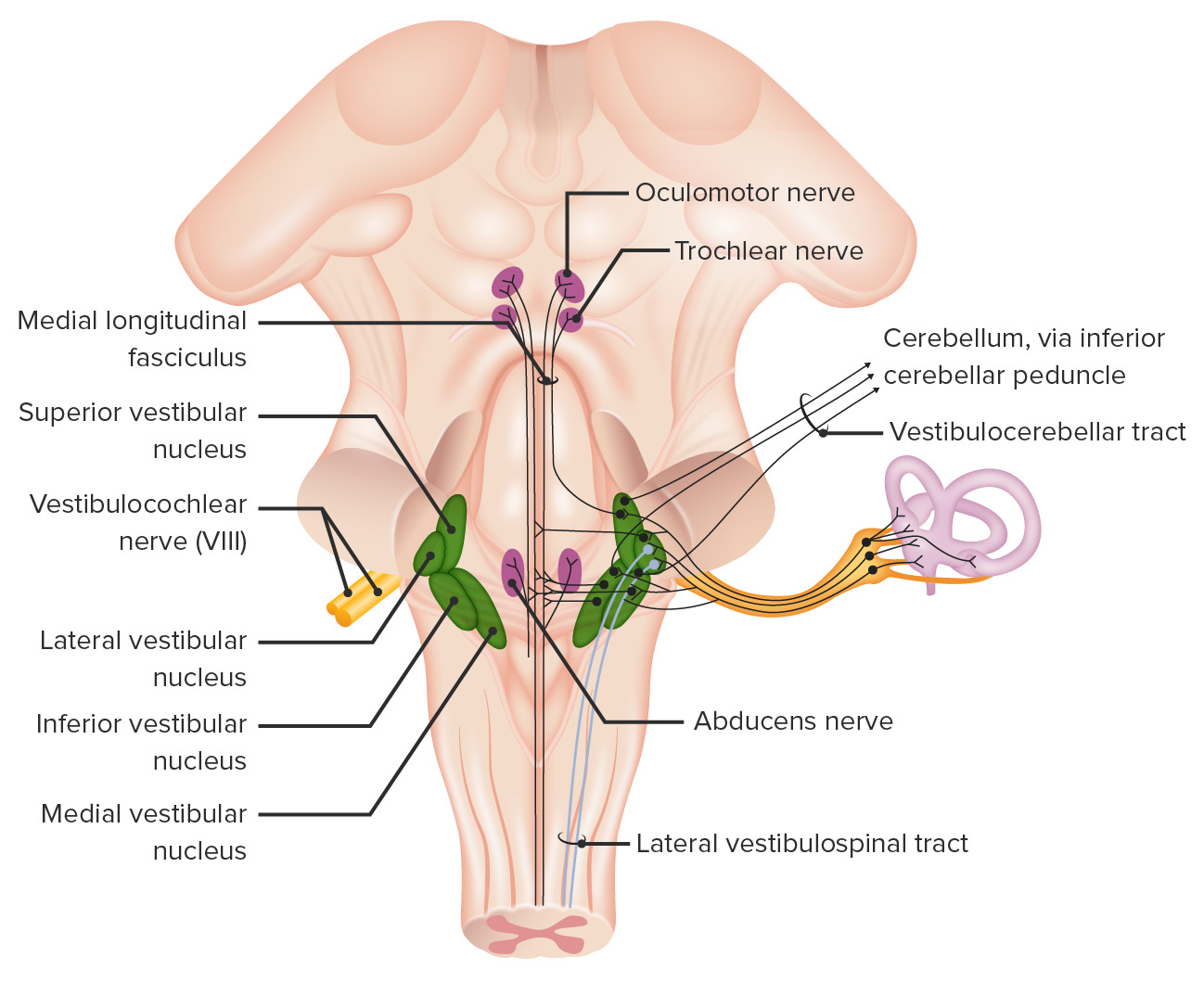Playlist
Show Playlist
Hide Playlist
Conduction of Sound
-
Slides Vestibular system.pdf
-
Reference List Histology.pdf
-
Download Lecture Overview
00:00 And basically, what happens is summarized on this diagram. Without going to too much detail, this is a diagram that really unwinds the cochlea. And the white spaces you see there represent the scala vestibule and the scala tympani. The scala vestibuli starts or commences, as I mentioned before, at the oval window in contact with the bony ossicles. The scala tympani ends at the round window. And right at the top of the diagram, there's the helicotrema. That is where the perilymph circulates from the scala vestibuli to the scala tympani. So, when the sound waves create the vibration of the tympanic membrane and that sound energy is then transferred to mechanical energy through the bony ossicles, it causes the oval window to vibrate, and that creates a wave of vibration through that perilymph. And so the basilar membrane starts to vibrate. And depending on the frequency of the sound, it will vibrate at various locations. It will be displaced. And the maximum displacement component or location will represent the frequency of that sound, and there will be different places for the maximum displacement depending on the different frequencies of sound, and that allows us to discriminate sound frequencies. The basilar membrane detects high frequency sounds down low at the base of the cochlea. And rather, low pitch sound or low frequency sounds up at the apex of the cochlea. At the apex of the cochlea, the basilar membrane is its widest, but it's also more relaxed or less stiff. So this allows different waves of displacement to be created depending on the frequency of the sound. And the amplitude of the sound will change. The amplitude will create various degrees of displacement. 02:38 And that amount of displacement will be the way in which we can perceive the actual loudness of the particular sound, not just the frequency.
About the Lecture
The lecture Conduction of Sound by Geoffrey Meyer, PhD is from the course Sensory Histology.
Included Quiz Questions
Where do the scala tympani and scala vestibuli meet?
- Helicotrema
- Basilar membranes
- Middle ear cavity
- Round window
- Oval window
High-pitched sounds are detected at which part of the cochlea?
- At the base
- At the apex
- At the midportion
- Both at the base and at the apex
Customer reviews
5,0 of 5 stars
| 5 Stars |
|
5 |
| 4 Stars |
|
0 |
| 3 Stars |
|
0 |
| 2 Stars |
|
0 |
| 1 Star |
|
0 |





